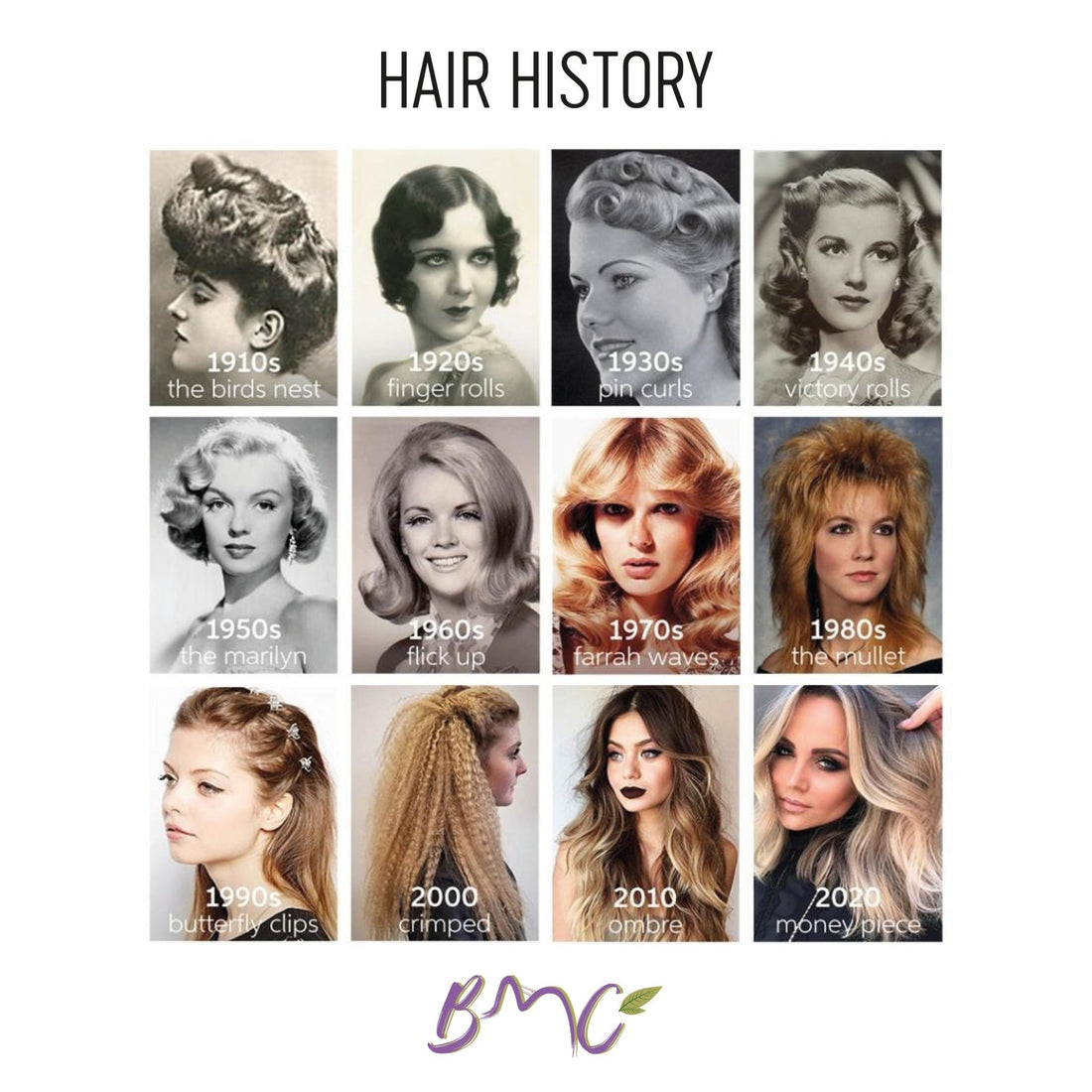
Journey Through the History of Hair
Share
Introduction: Hair has always held a special place in human history, serving as a symbol of identity, cultural expression, and personal style. Throughout the ages, hairstyles and hair care practices have evolved, reflecting societal trends, technological advancements, and cultural influences. Join us on a captivating journey as we explore the rich history of hair, from ancient civilizations to modern-day trends.
1. Ancient Civilizations: Mesopotamia, Egypt, and Greece
In ancient Mesopotamia, hair was considered a symbol of power and status. Men and women adorned their hair with elaborate headdresses, gold accessories, and intricate braids. In Egypt, hairstyles had both practical and symbolic significance. Wigs were popular, as they provided protection from the scorching sun and were often worn by the elite. The Egyptians also used various natural substances for haircare, including plant extracts and animal fats. Ancient Greece saw hairstyles as an art form, with intricate updos and curls for women and shorter, more natural styles for men.
2. The Middle Ages: Medieval Europe and East Asia
During the Middle Ages, hairstyles in Europe were heavily influenced by social hierarchy and religious beliefs. Women's hair was often concealed under veils or headdresses, while men's hairstyles varied depending on their social standing. In East Asia, particularly in China and Japan, hair was highly valued and seen as a reflection of one's family and cultural background. Elaborate hairstyles with intricate hairpieces and ornaments were common, emphasizing elegance and grace.
3. Renaissance and Baroque Eras: Europe's Extravagant Styles
The Renaissance brought about a revival of interest in classical art and culture. Hairstyles became more elaborate, with women donning ornate wigs, braids, and intricate updos adorned with jewels and feathers. In the Baroque era, powdered wigs and extravagant hairstyles dominated European fashion. Men and women alike powdered their hair with white or gray powder, creating towering hairstyles that symbolized wealth and nobility.
4. The Victorian Era: Elegance and Constraint
The Victorian era marked a period of restraint and conformity in hairstyling. Women's hair was often worn in intricate updos or tightly pulled back, reflecting the societal expectation for modesty and femininity. Elaborate hairpieces, such as false braids and hair rats, were used to enhance volume and create the desired hairstyles.
5. The Roaring Twenties and Beyond: Rebellion and Experimentation
The 1920s brought a dramatic shift in hairstyles as women embraced the freedom and rebellion of the Jazz Age. The iconic bob haircut became popular, symbolizing independence and the breaking of societal norms. Throughout the 20th century, hairstyles continued to evolve, from the glamorous waves of the 1940s to the sleek, straight styles of the 1960s. The punk movement of the 1970s and the natural hair movement of the 2000s challenged traditional beauty standards and celebrated individuality.
Conclusion:
The history of hair is a testament to the ever-changing nature of fashion, culture, and personal expression. From ancient civilizations to modern trends, hairstyles have played a significant role in defining identities and reflecting societal values. As we navigate the diverse landscape of hair today, let us appreciate the rich tapestry of history that has shaped our perceptions of beauty and continue to embrace the freedom of self-expression through our own unique hairstyles.
1. Ancient Civilizations: Mesopotamia, Egypt, and Greece
In ancient Mesopotamia, hair was considered a symbol of power and status. Men and women adorned their hair with elaborate headdresses, gold accessories, and intricate braids. In Egypt, hairstyles had both practical and symbolic significance. Wigs were popular, as they provided protection from the scorching sun and were often worn by the elite. The Egyptians also used various natural substances for haircare, including plant extracts and animal fats. Ancient Greece saw hairstyles as an art form, with intricate updos and curls for women and shorter, more natural styles for men.
2. The Middle Ages: Medieval Europe and East Asia
During the Middle Ages, hairstyles in Europe were heavily influenced by social hierarchy and religious beliefs. Women's hair was often concealed under veils or headdresses, while men's hairstyles varied depending on their social standing. In East Asia, particularly in China and Japan, hair was highly valued and seen as a reflection of one's family and cultural background. Elaborate hairstyles with intricate hairpieces and ornaments were common, emphasizing elegance and grace.
3. Renaissance and Baroque Eras: Europe's Extravagant Styles
The Renaissance brought about a revival of interest in classical art and culture. Hairstyles became more elaborate, with women donning ornate wigs, braids, and intricate updos adorned with jewels and feathers. In the Baroque era, powdered wigs and extravagant hairstyles dominated European fashion. Men and women alike powdered their hair with white or gray powder, creating towering hairstyles that symbolized wealth and nobility.
4. The Victorian Era: Elegance and Constraint
The Victorian era marked a period of restraint and conformity in hairstyling. Women's hair was often worn in intricate updos or tightly pulled back, reflecting the societal expectation for modesty and femininity. Elaborate hairpieces, such as false braids and hair rats, were used to enhance volume and create the desired hairstyles.
5. The Roaring Twenties and Beyond: Rebellion and Experimentation
The 1920s brought a dramatic shift in hairstyles as women embraced the freedom and rebellion of the Jazz Age. The iconic bob haircut became popular, symbolizing independence and the breaking of societal norms. Throughout the 20th century, hairstyles continued to evolve, from the glamorous waves of the 1940s to the sleek, straight styles of the 1960s. The punk movement of the 1970s and the natural hair movement of the 2000s challenged traditional beauty standards and celebrated individuality.
Conclusion:
The history of hair is a testament to the ever-changing nature of fashion, culture, and personal expression. From ancient civilizations to modern trends, hairstyles have played a significant role in defining identities and reflecting societal values. As we navigate the diverse landscape of hair today, let us appreciate the rich tapestry of history that has shaped our perceptions of beauty and continue to embrace the freedom of self-expression through our own unique hairstyles.
